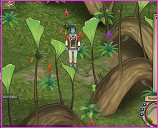Posted on December 24th, 2015 by Mary Lord
 In this collaborative math and art lesson, students in grades 4 through high school explore central ideas in industrial engineering – including productivity, efficiency, and quality – by designing their own assembly line and working together to mass produce greeting cards.
In this collaborative math and art lesson, students in grades 4 through high school explore central ideas in industrial engineering – including productivity, efficiency, and quality – by designing their own assembly line and working together to mass produce greeting cards.
Read More
Filed under: Class Activities, Grades 6-8, Grades 6-8, Grades 9-12, Grades 9-12, Grades K-5, Grades K-5, Lesson Plans | Comments Off on Greeting Card Assembly Line
Tags: Art, assembly line, Class Activities, Common Core State Mathematics Standards, girls in STEM, Grades 6-8, Grades 9-12, Grades K-5, greeting card, Industrial engineering, Lesson Plans, Math, STEAM
Posted on May 13th, 2015 by Mary Lord
 What do 6th and 7th graders know about where energy comes from, how much we use, and how that affects our daily lives? EnergyTrends.org is hosting a video contest for public school students to find out. Deadline is midnight May 29, 2015.
What do 6th and 7th graders know about where energy comes from, how much we use, and how that affects our daily lives? EnergyTrends.org is hosting a video contest for public school students to find out. Deadline is midnight May 29, 2015.
Read More
Filed under: Competitions and Contests, Grades 6-8, Web Resources | Comments Off on EnergyTrends Video Contest
Tags: Common Core State Mathematics Standards, Competitions for Students, Contest, Energy, energyTrends.org, Lesson Plans, Lexington Institute, NGSS, power, STEM education, Teacher Resources, Video contest
Posted on August 29th, 2013 by Mary Lord
 Can MOOGs – massive multiplayer online games – help teach students to think like scientists and engineers? MIT researchers think so, and they have developed a game based on the Next Generation Science Standards and common core mathematics standards to teach high school biology, algebra, geometry, probability, and statistics.
Can MOOGs – massive multiplayer online games – help teach students to think like scientists and engineers? MIT researchers think so, and they have developed a game based on the Next Generation Science Standards and common core mathematics standards to teach high school biology, algebra, geometry, probability, and statistics.
Read More
Filed under: For Teachers, Grades 6-8, Grades 9-12, K-12 Outreach Programs, Web Resources | Comments Off on MIT Unveils Multiplayer Online STEM Game
Tags: Bill and Melinda Gates Foundation, Common Core State Mathematics Standards, education technology, gaming, massive multiplayer online game, MIT, MMO, NGSS, online game, Radix Endeavor, STEM, STEM education
Posted on July 31st, 2013 by Mary Lord
 In this first of eight activities, students in grades 6 – 8 learn about the engineering design process and earth science by beginning to design an underground cavern that can shelter people for one year after an asteroid strike makes Earth uninhabitable.
In this first of eight activities, students in grades 6 – 8 learn about the engineering design process and earth science by beginning to design an underground cavern that can shelter people for one year after an asteroid strike makes Earth uninhabitable.
Read More
Filed under: Class Activities, Grades 6-8, Grades 6-8, Lesson Plans | Comments Off on Asteroid Impact!
Tags: asteroid, Class Activities, Common Core State Mathematics Standards, Disaster relief, Earth Science, Engineering Design, Geology, Grades 6-8, ITEEA, Lesson Plans, Next Generation Science Standards, shelter, Space
Posted on June 19th, 2013 by Mary Lord
 On May 24, Rhode Island became the first state to approve the Next Generation Science Standards (NGSS). Kentucky’s state board of education followed on June 5. Both are among the 26 states that helped develop the new academic standards, which include engineering design as a stand-alone strand.
On May 24, Rhode Island became the first state to approve the Next Generation Science Standards (NGSS). Kentucky’s state board of education followed on June 5. Both are among the 26 states that helped develop the new academic standards, which include engineering design as a stand-alone strand.
Read More
Filed under: K-12 Education News | Comments Off on First States Approve New Science Standards
Tags: Change the Equation, Common Core State Mathematics Standards, Education Policy, Kentucky, Next Generation Science Standards, Public Policy, Rhode Island, science standards, state board of education
 In this collaborative math and art lesson, students in grades 4 through high school explore central ideas in industrial engineering – including productivity, efficiency, and quality – by designing their own assembly line and working together to mass produce greeting cards.
In this collaborative math and art lesson, students in grades 4 through high school explore central ideas in industrial engineering – including productivity, efficiency, and quality – by designing their own assembly line and working together to mass produce greeting cards.








 What do 6th and 7th graders know about where energy comes from, how much we use, and how that affects our daily lives? EnergyTrends.org is hosting a video contest for public school students to find out. Deadline is midnight May 29, 2015.
What do 6th and 7th graders know about where energy comes from, how much we use, and how that affects our daily lives? EnergyTrends.org is hosting a video contest for public school students to find out. Deadline is midnight May 29, 2015.  Can MOOGs – massive multiplayer online games – help teach students to think like scientists and engineers? MIT researchers think so, and they have developed a game based on the Next Generation Science Standards and common core mathematics standards to teach high school biology, algebra, geometry, probability, and statistics.
Can MOOGs – massive multiplayer online games – help teach students to think like scientists and engineers? MIT researchers think so, and they have developed a game based on the Next Generation Science Standards and common core mathematics standards to teach high school biology, algebra, geometry, probability, and statistics. In this first of eight activities, students in grades 6 – 8 learn about the engineering design process and earth science by beginning to design an underground cavern that can shelter people for one year after an asteroid strike makes Earth uninhabitable.
In this first of eight activities, students in grades 6 – 8 learn about the engineering design process and earth science by beginning to design an underground cavern that can shelter people for one year after an asteroid strike makes Earth uninhabitable. On May 24, Rhode Island became the first state to approve the Next Generation Science Standards (NGSS). Kentucky’s state board of education followed on June 5. Both are among the 26 states that helped develop the new academic standards, which include engineering design as a stand-alone strand.
On May 24, Rhode Island became the first state to approve the Next Generation Science Standards (NGSS). Kentucky’s state board of education followed on June 5. Both are among the 26 states that helped develop the new academic standards, which include engineering design as a stand-alone strand.